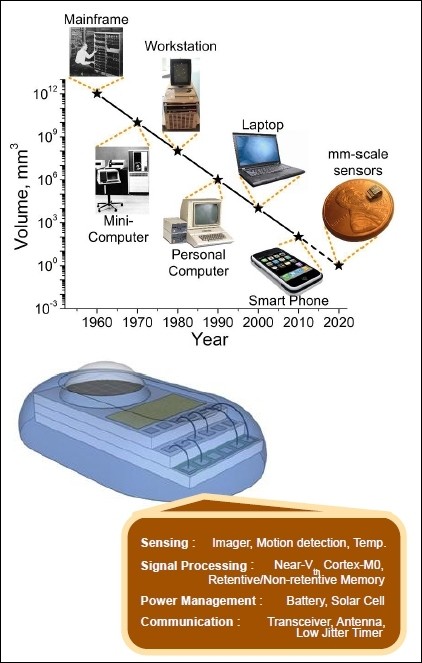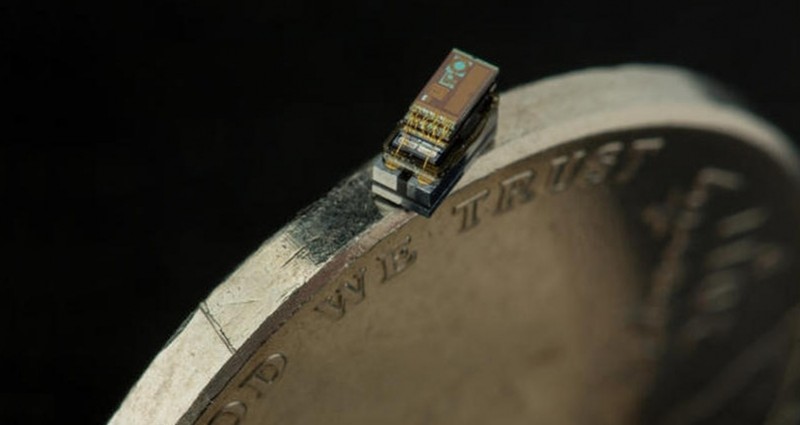With tiny PCs like Intel's Compute Stick now a reality, it's increasingly difficult to envision a time when a single computer weighed 30 tons, took up as much space as a full-sized school bus and was much slower than even a modern pocket calculator.
As impressive as Intel's HDMI stick is, it doesn't hold a candle to a micro machine called the Michigan Micro Mote (M^3) which is believed to be the world's smallest autonomous computer. The product of more than a decade of work, the M^3 can comfortably fit on the edge of a nickel.
Key to shrinking down the system to just one millimeter cubed was scaling down the computer's battery. David Blaauw, computer science and engineering professor at the University of Michigan, said what most people don't realize is that a very large part of the volume of a device like a cell phone is consumed by the battery.

By bringing down the amount of power the system needed, the team was able to reduce the battery size which in turn reduced the overall size of the computer.
It doesn't use a keyboard, mouse or display. Instead, researchers program the PC (and charge it) using light strobed at a high frequency. Once data has been processed, information is sent to a central computer using radio frequencies.
Initial applications will likely take place in medical and industrial sectors. As CBS News points out, the computer is small enough to be injected into the human body. Given the rapidly-growing Internet of Things, M^3 also has a bright future in everyday consumer devices.
